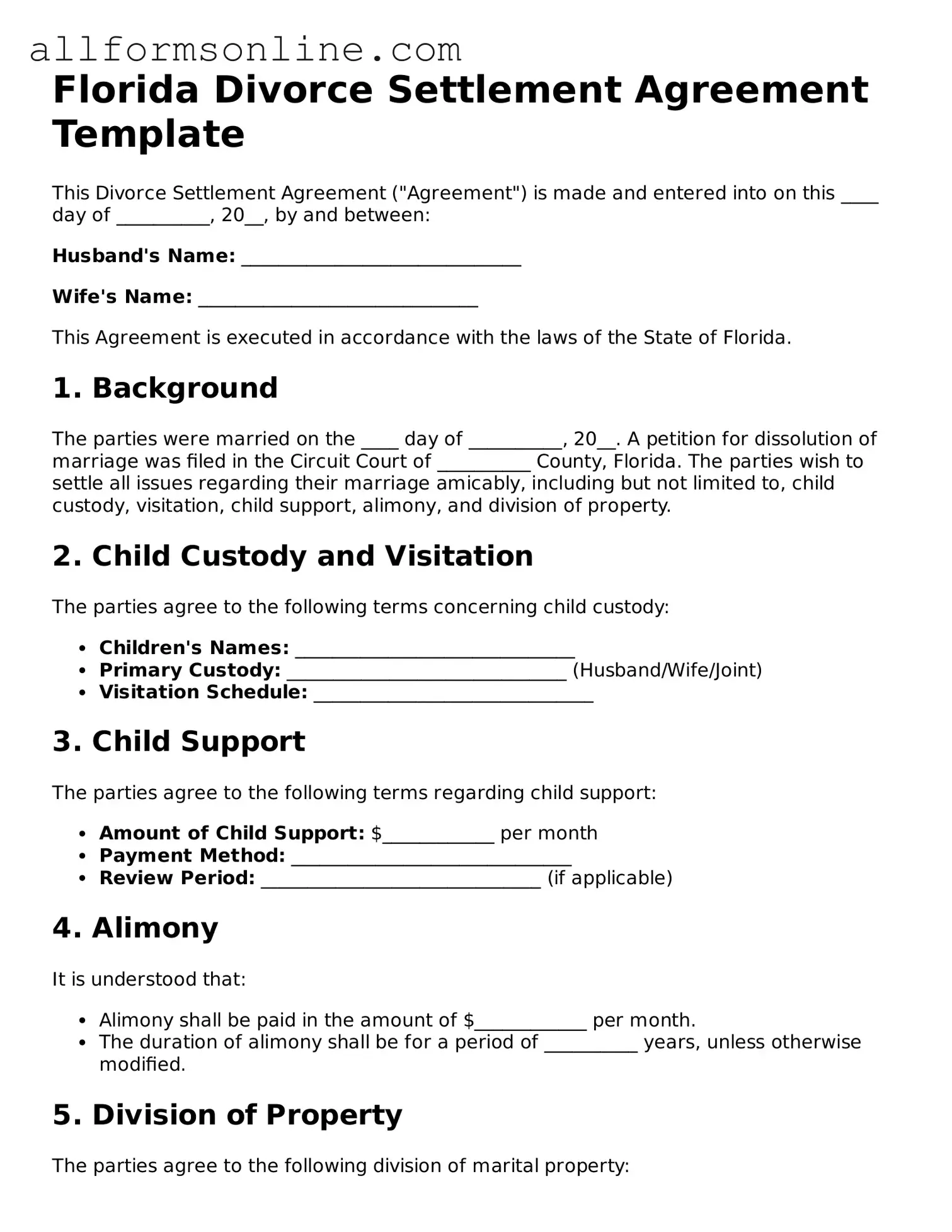What is a Florida Divorce Settlement Agreement?
A Florida Divorce Settlement Agreement is a legal document that outlines the terms agreed upon by both spouses during a divorce. It covers various aspects such as property division, child custody, child support, and alimony. This agreement helps to ensure that both parties have a clear understanding of their rights and obligations following the divorce.
How do I create a Divorce Settlement Agreement in Florida?
To create a Divorce Settlement Agreement, both spouses need to discuss and negotiate the terms of their divorce. It is advisable to document these discussions in writing. Once both parties agree, the terms should be formalized in the agreement. It is often beneficial to consult with a lawyer to ensure that the agreement complies with Florida law and adequately protects your interests.
Is a Divorce Settlement Agreement legally binding?
Yes, a Divorce Settlement Agreement is legally binding once it is signed by both parties and approved by the court. This means that both spouses are obligated to adhere to the terms outlined in the agreement. If one party fails to comply, the other may seek enforcement through the court.
What happens if we cannot agree on the terms?
If both spouses cannot reach an agreement on the terms of the divorce, they may need to go to court. In this case, a judge will make the final decisions regarding property division, custody, and support. This process can be lengthy and costly, so it is generally better to try to reach a settlement outside of court if possible.
Can I modify the Divorce Settlement Agreement after it is signed?
Yes, a Divorce Settlement Agreement can be modified after it is signed, but only under certain circumstances. Both parties must agree to the changes, and the modifications should be documented in writing. In some cases, you may need to return to court to have the changes approved, especially if they involve child custody or support arrangements.
What should I include in the Divorce Settlement Agreement?
When drafting a Divorce Settlement Agreement, it is important to include key elements such as the division of marital property, debts, child custody arrangements, visitation schedules, child support amounts, and alimony terms. Clear and detailed provisions will help prevent misunderstandings and disputes in the future.
Do I need a lawyer to draft my Divorce Settlement Agreement?
While it is not legally required to have a lawyer draft your Divorce Settlement Agreement, it is highly recommended. A lawyer can help ensure that the agreement is fair, complies with Florida law, and adequately protects your rights. If you choose to proceed without legal assistance, be sure to thoroughly research the requirements and implications of the agreement.
